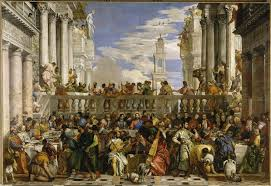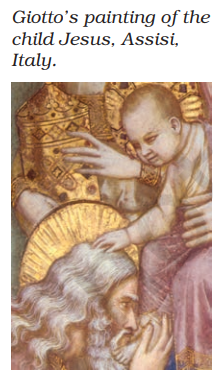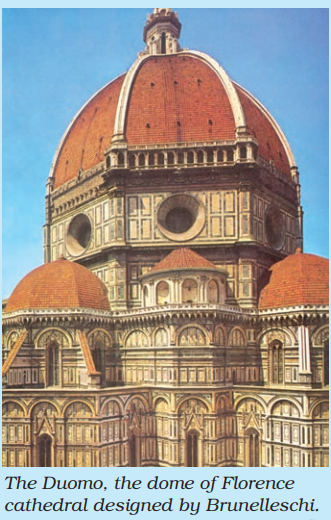Changing Cultural Traditions – Complete Guide For Class 11 History Chapter 5
Welcome to iPrep, your Learning Super App. Our learning resources for the chapter “Changing Cultural Traditions” in History for Class 11th are designed to ensure that you grasp this concept with clarity and perfection. Whether you’re studying for an upcoming exam or strengthening your concepts, our engaging animated videos, practice questions, and notes offer the best of integrated learning with interesting explanations and examples.
Objectives Of Learning The Chapter Changing Cultural Traditions
The chapter “Changing Cultural Traditions” explores the intellectual, cultural, and artistic transformations that occurred in Europe between the 14th and 17th centuries. This period, known as the Renaissance, marked a revival of interest in the classical knowledge of Greece and Rome, leading to developments in various fields including art, science, and philosophy. The chapter discusses the rise of humanism, the contributions of artists and architects, the influence of new scientific ideas, and the social and religious changes that shaped the modern Western world.
The Renaissance was a time of profound change in Europe, affecting every aspect of life from the arts to science, religion, and philosophy. The revival of classical knowledge and the emergence of humanism challenged the medieval worldview and laid the foundation for the modern age. This chapter delves into the cultural and intellectual movements that defined this period, examining how the Renaissance began in Italy and spread across Europe, transforming societies in its wake.
Now that we have explored the importance of the chapter, let’s outline the objectives of studying it.
- Understand the origins and impact of the Renaissance in Europe.
- Explore the role of humanism in shaping new cultural and intellectual trends.
- Analyze the contributions of Renaissance artists, architects, and scientists.
- Examine the social, religious, and philosophical debates of the period.
- Discuss the legacy of the Renaissance and its significance in world history.
Now let’s explore the various sections of the chapter.
Firstly, to understand the economic and political conditions that fostered the Renaissance, let’s delve into the ‘The Revival of Italian Cities’ section of the chapter “Changing Cultural Traditions.”
The Revival of Italian Cities
- The Renaissance began in Italy, where several cities experienced a period of economic growth and cultural flourishing.
- This is largely attributed to Italy’s geographical location, which made it a center for trade and commerce with the East.
- Additionally, Italy was the birthplace of the Roman Empire, and many ancient Roman ruins and artifacts were preserved there.

- The City-State:
- Italian cities like Florence, Venice, and Milan developed into powerful city-states.
- These city-states fostered trade, commerce, and intellectual activity.

Now, to grasp the intellectual foundations of the Renaissance, let’s explore the ‘Universities and Humanism’ section of the chapter “Changing Cultural Traditions.”
Universities and Humanism
- Universities emerged as centers of learning and scholarship during the Renaissance.
- Humanism, a philosophical movement that emphasized the study of classical humanities, gained prominence.

The Humanist View of History
- Humanists believed in the importance of studying history and classical texts.
- They sought to understand human nature and society through the lens of classical culture.

Now, to comprehend the cross-cultural influences on European thought, let’s explore the ‘Science and Philosophy: The Arabs’ Contribution’ section of the chapter “Changing Cultural Traditions.”
Science and Philosophy: The Arabs’ Contribution
The Renaissance witnessed significant advancements in science and philosophy, often building upon the knowledge of earlier civilizations, particularly the Arabs.
- Artists and Realism:
- Renaissance artists sought to create realistic and detailed depictions of the human form and natural world.
- They developed new techniques and perspectives in painting, sculpture, and architecture.
- Notable artists like Leonardo da Vinci and Michelangelo were highly skilled and versatile artists who made significant contributions to the development of Western art.

Now, to understand the architectural innovations of the period, let’s delve into the Architecture section of the chapter “Changing Cultural Traditions.”
Architecture
- Renaissance architecture was characterized by its emphasis on symmetry, proportion, and harmony.
- Renaissance architects often drew inspiration from classical Greek and Roman architecture, incorporating elements such as columns, arches, and domes into their designs.
- Buildings constructed during the Renaissance period are renowned for their beauty, elegance, and durability.

Now, in order to understand the spread of knowledge, let’s delve into the The First Printed Books section of the chapter “Changing Cultural Traditions.”
The First Printed Books
- The invention of the printing press revolutionized communication and knowledge dissemination.
- Printed books made texts more accessible and affordable.

Now, in order to understand the changing perceptions of individuality, let’s delve into the A New Concept of Human Beings section of the chapter “Changing Cultural Traditions.”
A New Concept of Human Beings
The Renaissance fostered a new concept of human beings as capable of great achievements and self-improvement.
- The Aspirations of Women:
- Women’s roles and aspirations began to change during the Renaissance.
- Some women achieved prominence in fields like art and literature.

Now, in order to understand the religious challenges of the period, let’s delve into the Debates within the Christianity section of the chapter “Changing Cultural Traditions.”
Debates within Christianity
- The Renaissance also witnessed debates and challenges within Christianity.
- The Protestant Reformation, initiated by Martin Luther in the early 16th century, challenged the authority of the Catholic Church and led to the formation of new Protestant denominations.
- This religious schism had a profound impact on European society and politics, as well as on the development of cultural and intellectual traditions.
Now, in order to understand the revolutionary ideas in science, let’s delve into the Copernican Revolution section of the chapter “Changing Cultural Traditions.”
The Copernican Revolution
- Nicolaus Copernicus, a Polish astronomer, argued that the Earth revolved around the Sun, rather than the other way around.
- This groundbreaking theory had a profound impact on scientific thought and helped to usher in the Age of Enlightenment.
- The Copernican revolution challenged the geocentric view of the universe, proposing a heliocentric model.

Now, to grasp the advancements in scientific observation, let’s explore the ‘Reading the Universe’ section of the chapter “Changing Cultural Traditions.”
Reading the Universe
- The Renaissance encouraged a new way of understanding the natural world through observation and experimentation.
- This shift in thinking is often referred to as the Scientific Revolution.
- Renaissance scholars and scientists began to question traditional beliefs and rely on empirical evidence to gain knowledge.
Now, in order to understand the broader implications of the Renaissance, let’s delve into the Was there a European ‘Renaissance’ in the Fourteenth Century? Section of the chapter “Changing Cultural Traditions.”
Was there a European ‘Renaissance’ in the Fourteenth Century?
- Historians debate whether the Renaissance began in the 14th century or later.
- Some argue that the foundations of the Renaissance were laid in the 14th century.
Finally, as we have gained comprehensive knowledge about the chapter “Changing Cultural Traditions”, let’s reflect on the overall learning value of this important lesson.
Overall Learning Value of the Chapter
The chapter “Changing Cultural Traditions” offers a comprehensive overview of the Renaissance period, highlighting the transformative impact of new ideas and cultural practices on European society. By understanding the various facets of this era, students can appreciate the roots of modern Western civilization and the enduring legacy of the Renaissance in shaping contemporary thought, art, and science.
Let’s Conclude
In conclusion, CBSE Class 11th History Chapter – Changing Cultural Traditions provides a rich exploration of the transformative Renaissance period, which profoundly influenced European thought, culture, and society. Through this chapter, students gain a nuanced understanding of how ideas from this era reshaped art, science, and philosophy, laying the groundwork for modern Western civilization. By delving into themes of humanism, scientific inquiry, and the reawakening of classical knowledge, Class 11th students studying Changing Cultural Traditions can appreciate the powerful legacy this period holds in our world today. We at iPrep are committed to supporting your journey through Class 11th History’s Changing Cultural Traditions with our comprehensive resources, helping you build a solid foundation in this essential chapter.
Practice questions on Chapter 5 - Changing Cultural Traditions
Get your free Chapter 5 - Changing Cultural Traditions practice quiz of 20+ questions & detailed solutions
Practice Now








